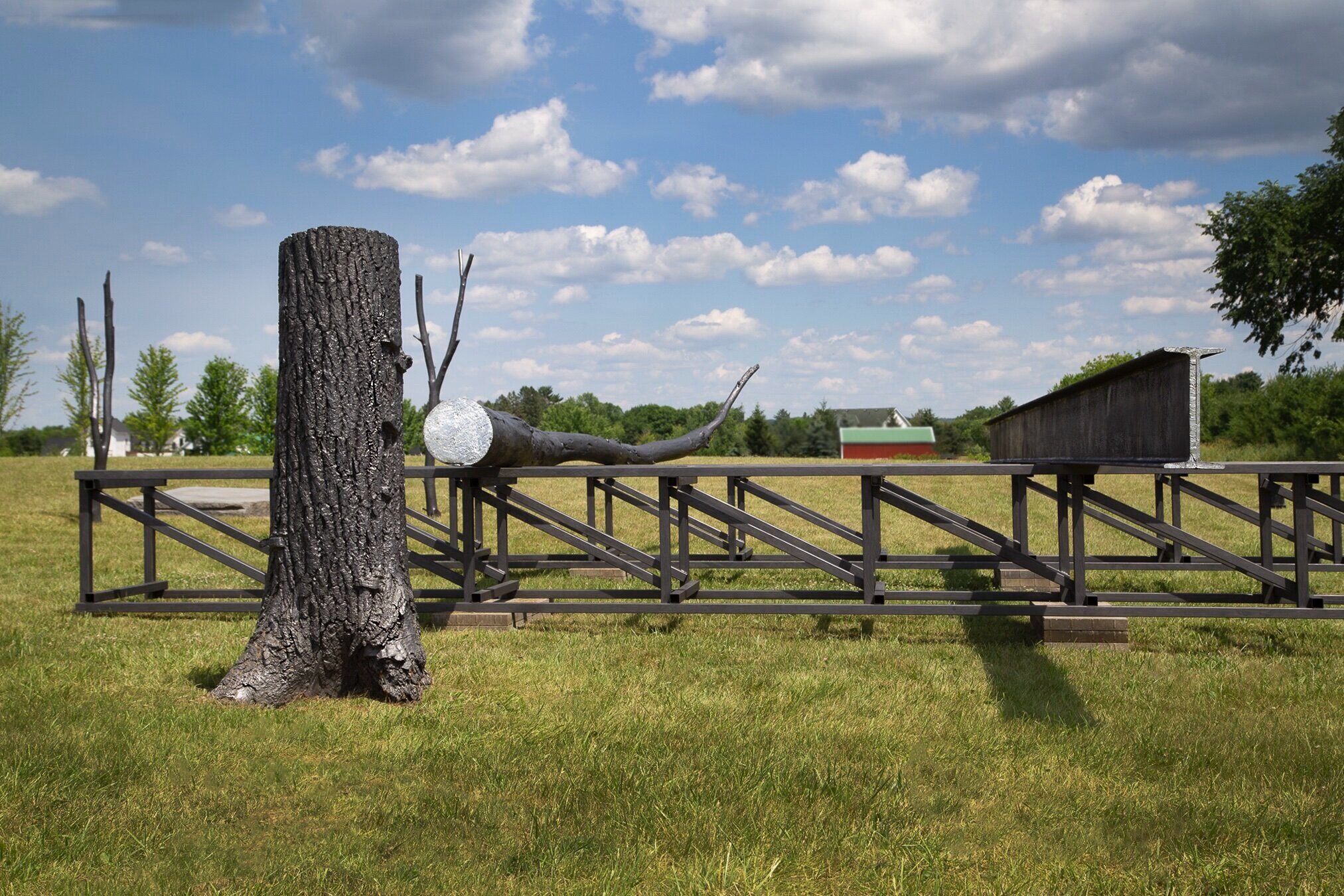











Drawing for a Reliquary is a site-specific installation by Diana Shpungin and Paul Amenta at Franconia Sculpture Park in Minnesota
Drawing For A Reliquary is both a drawing, a sculpture, and a large-scale mixed-media installation comprised of various salvaged components and two fabricated steel truss structures, with the entirety of all their surfaces painstakingly hand-drawn in graphite pencil. By way of this process the sculpture becomes a ghostly remnant, both an ode to historical minimalist metal sculpture and a ceremonial environment occupying the natural setting.
photo credit: Diana Shpungin

The surface treatment summoned involvement from dozens of participants, allowing for the communal mark-making to be both a part of the work’s present history and as an offering to the past. The pencil is perhaps the most familiar of art tools and graphite is a contradictory material — both incredibly permanent, yet easily erasable — both of the earth, composed of a crystalline carbon (one step closer to diamonds by about a billion years +/-), yet human-made in its utilitarian state. When graphite was first discovered as a drawing implement in the 1500’s, shepherds found it especially effective in marking their sheep so they could be counted and not lost. In contrast, if a visitor chooses to touch the artwork, the graphite rubs off on their skin or garment, effectively taking the memory of the site home with them.
The adaptive nature of the work reacts specifically to objects/relics found on site in the sculpture park. From the three upright lifeless trees rescued from being burned in a bonfire, to the fallen forty-foot dead tree discovered in the woods, to the monumental forty-foot steel beam buried in a pile of metal looking to find purpose again. While a traditional reliquary generally elevates the already historically powerful, this work considers the site and memory of its inhabitants and elevates the discarded, unknown, forgotten, and/or overlooked, striking a both figurative and literal balance between the manufactured and natural world. The saw cut in the massive laid tree and end of the I-beam are encrusted in silver leaf as a way to elevate them, memorialize them and to denote empathy for one another. The addition of a selection of salvaged boulders act as a defining ritual-like framework and as a place to sit and contemplate.
Drawing For A Reliquary is framed by the park’s backdrop and offers numerous views lining up the sculpture’s sight-lines with the distant horizons. The work will constantly undergo seasonal change, through the browning of the meadow in the fall, to the white blanket of snow in the winter, to the bright green field come spring, and to the scorching of the grass quadrant come next summer — offering renewal. While we may assume memory is inherently personal, it often acts as a collective metaphor for broader political concerns. When one shows empathy for an object, an animal, or reverence for nature, the hope is that that capability of caring translates and functions as a surrogate for fellow humans.
Special thanks to Lindsey Shaw, Avi Saliman, Will Slayden, Scott Kosloski, and all the many wonderful Franconia staff members, emerging artists and park visitors for their participation in this project’s creation.